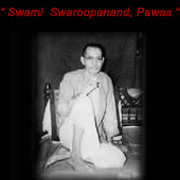Bharat Mata Temple
The Bharat Mata temple at Varanasi is the only temple dedicated to Mother India. It is located in the Mahatma Gandhi Kashi Vidyapeeth campus. The Bharat Mata temple was built by Babu Shiv Prasad Gupt and inaugurated by Mahatma Gandhi in 1936. The statute of Bharat Mata is built in marble and is a model of undivided India, depicting the mountains, plains and oceans. The most peculiar thing about the Bharat Mata Temple is that instead of the customary gods and goddesses, it houses a relief map of India, carved out of marble.
Durga Temple
Durga temple, also known as the "monkey temple" is one of the important temples of Varanasi. This temple is dedicated to Goddess Durga. The Durga temple was built in the eighteenth century. A Bengali Maharani built the Durga temple in Nagara Style (the North Indian style of temple architecture). It is stained red with ochre and has a multi-tiered shikhara (spire). The Durga temple is situated on a rectangular tank, called the Durga Kund. According to the Puranas, Goddess Durga has kept this place for many centuries and protects the holy city, Varanasi, from the South.
According to legends, the present statue of Goddess Durga was not made by man but appeared on its own in the temple. The Durga temple is also called Monkey temple because of the presence of large number of monkeys. In Hinduism, Durga is represented as the embodiment of shakti or female power, clad in red, riding a tiger and fully armed with Shiva's trident, Vishnu's discus and a sword. Non-Hindus can enter the courtyard of the Durga temple but not the inner sanctum. Thousands of Hindu devotees visit the Durga temple during Navratri and other auspicious occasions.
New Vishwanath Temple
The new Vishwanath temple of Varanasi is located in the premises of the Banaras Hindu University (BHU). It is also called the Birla temple as the famous industrialist family of India, the Birlas, constructed it. The New Vishwanath Temple is dedicated to lord Shiva and is a replica of the original Vishwanath temple. The temple is built in white marbles, and was planned by Madan Mohan Malviya, the founder of the Banaras Hindu University. The most important characteristic of the new Vishwanath temple is that it is open to people from all castes and religions. The huge campus of New Vishwanath Temple is a delight to the eyes of visitor. The interior has a Siva lingam and verses from Hindu scriptures are inscribed on the walls.
Sankat Mochan Temple
Sankat Mochan temple is one of the sacred temples of Varanasi. It is located in the southern part of Varanasi, near the Banaras Hindu University. It is dedicated to the Hindu God, Hanuman. The word "Sankat Mochan" means one who helps in removing sufferings i. e. Lord Hanuman. Tulsidas, the author of the famous Hindu epic Ramacharitamanasa, founded the Sankat Mochan temple. According to Hindu mythology, one who visits the Sankat Mochan temple regularly, his wishes get fulfilled.
Every Tuesday and Saturday, thousands of devotees queue up in front of the Sankat Mochan temple to offer prayers to Lord Hanuman. According to Vedic Astrology, Hanuman protects human beings from the anger of planet Saturn and those who have ill placed Saturn in their horoscope visit the Sankat Mochan temple to get remedy. People put "Sindoor" on the statue and offer "laddoos" to Lord Hanuman. The "Sindoor", from the statue of Lord Hanuman is put on the foreheads of devotees.
Tulsi Manas Temple
Tulsi Manas temple is one of the most famous temples of Varanasi. It is also an important tourist attraction of the holy city. The Tulsi Manas temple is located near the famous Durga temple. It was built in white marble in the year 1964. The temple has been made more charming by the magnificent landscaping around it. The Tulsi Manas temple is dedicated to lord Ram. It is believed to be built at the same place where Tulsidas wrote the famous Indian epic, Ramcharitamanasa. The walls of the Tulsi Manas temple are engraved with verses and scenes from the Ramcharitammanasa, the Hindi version of the Ramayana. The temple is open from 5.30 AM to noon and 3.30 to 9 PM.



